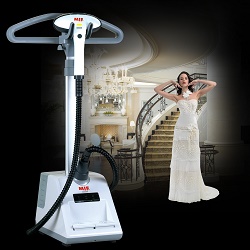Types of vintage irons
It is difficult to imagine life without such a simple device as an iron. He firmly entered our life, taking a worthy place in it. But how did people live in the last century and how did they solve the problem of ironing? How did the old irons work and look?
Content
The very first ironing device
It is difficult to say who was the first inventor of the prototype of a modern iron, but it is clear that ironing began to be used in the fifth century.
The first iron on the coals, which had a second name - steam, appeared early 16th century. This antique iron consisted of:
- containers in which coal was poured;
- pens;
- steam outlets.
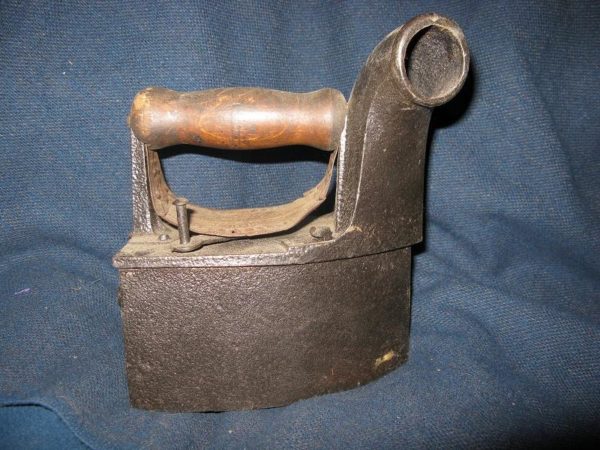
These devices were extremely heavy, but in order to inflate the coals, they had to wave hard. An old iron could easily burn a favorite thing, especially if a coal was falling out of it.
Cast iron
The coal iron was not the most convenient to use, so soon it began to be replaced with cast iron. At first, hot cast iron was used instead of coal, then they began to cast whole ironwork constructions from this metal. True, the weight of such a device reached 10 kilogramsthat made it impossible to use for delicate fabrics.
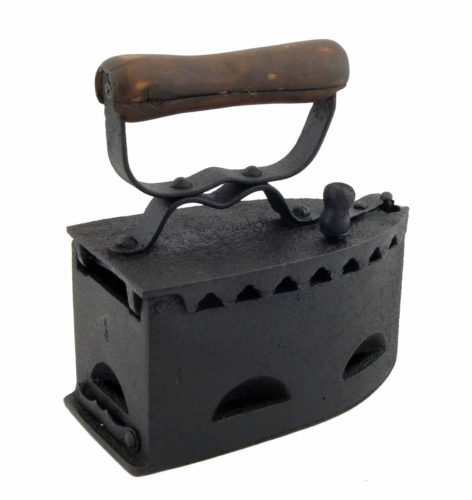
In the old days there was no universal adaptation, therefore there were irons for different fabrics and articles of clothing. There was even a small appliance that was used to iron the gloves.
Before use, the structure should be placed in a fire to heat the iron. Iron could stand there about an hour, which made the process of ironing extremely slow.
Alcoholic
This device was developed in Germany in the 19th century and had the following design:
- By the very iron was attached a small box, which was poured alcohol.
- From it inside the device were thin tubes through which the liquid flowed.
- When alcohol got into the device, it was set on fire, and the heat released heated the structure.
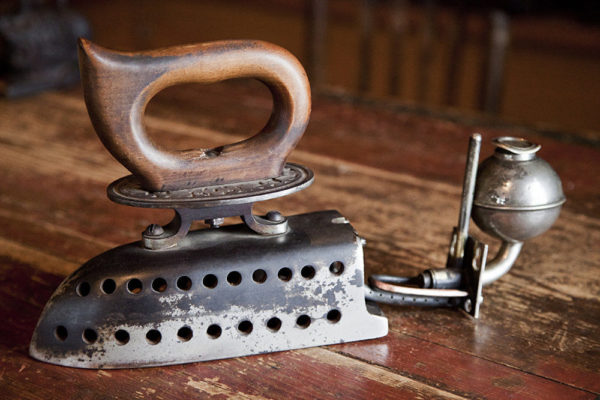
For a long time such an iron did not exist, because, despite the significant difference in weight, it was not profitable to transfer alcohol, but a lot of it was required.
Gas
By the end of the 19th century, gas had become one of the most sought-after natural resources. It was used everywhere, including in the ironing business. The design of such an iron was as follows:
- The gas cylinder was attached to the device itself, which was connected to it with a pipe.
- On the surface of the device was located a pump, during which the gas flowed into the burner.
- Before starting work, it was necessary to start the iron using a special key.
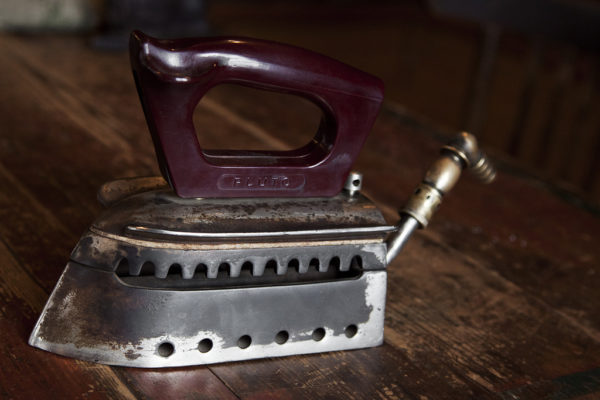
Despite the advantages, the safety of such an iron was seriously doubted; fires or explosions often occurred through carelessness.
Electric
The first electric iron appeared in 1882. Its inventor was Henry Seeley. Of course, the first models were imperfect and could easily shock. In order to test its warmth, we had to spit on the bottom and wait for the saliva to begin to hiss. This led to the formation of rust on the sole.
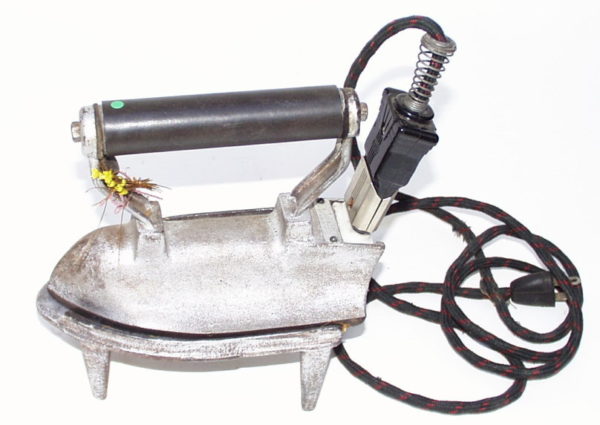
Before cleaning such an iron, wax was applied to its red-hot bottom. The method of cleaning consisted in the fact that the sole, with wax applied on it, was stroked with salt. The rust instantly went away.
New generation
The last few decades, progress does not step, it flies.It also touched the world of irons. One of the most recent inventions in this area was the Laura system.
Laurastar system supplies steam directly to the ironing board, which increases the efficiency of the ironing process.
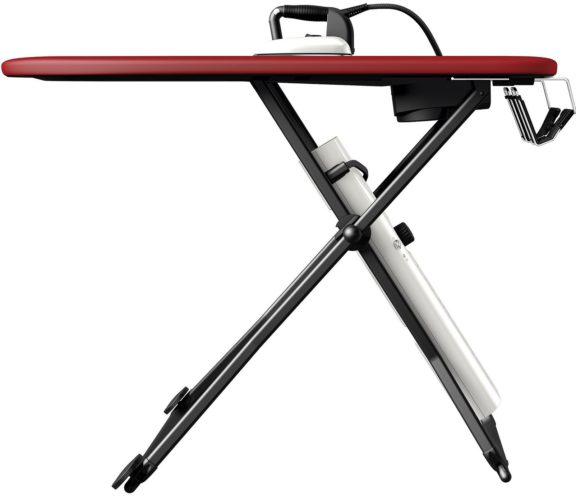
This principle is safe for any fabric, besides the new technology removes not only folds, but also smells and stains. Now you can remove shine from the fabric. With this iron you can even dry clothes, as the ironing surface heats up the work surface itself.
Conclusion
Everything is changing. This also applies to the world of home appliances. We have followed all the steps of the evolution of irons. It all began with a heavy device on coals, and today we are dealing with small units, simple and safe to use. Everything has changed, except for one detail: since the invention, the iron has not changed its wedge-shaped form.

/rating_off.png)







